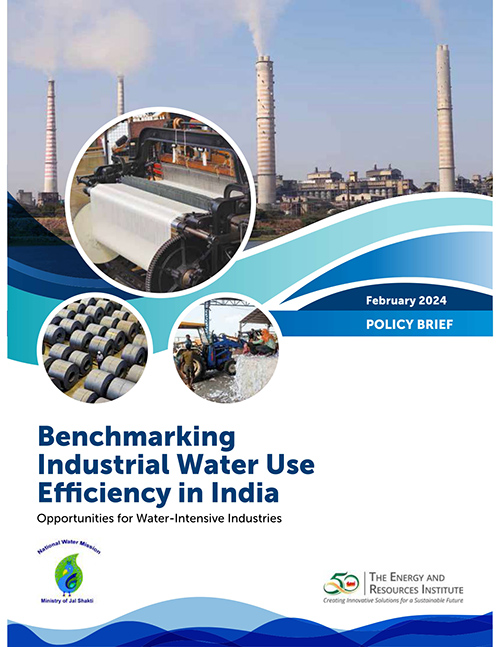Benchmarking Industrial Water Use Efficiency in India: Opportunities for Water-Intensive Industries
The rapid expansion of population and industrial activities in India has led to acknowledging the critical importance of water conservation. Addressing the escalating water usage within water-intensive industries is essential, given their significant contribution to the economy alongside their substantial impact on water resources. Amongst the water-intensive industries, thermal power plants are the highest consumer of water, followed by pulp & paper, textiles, and iron & steel industries. Existing challenges or inefficiencies in water management practices, such as over-extraction, pollution, or lack of wastewater treatment, further exacerbate the situation. Implementing benchmarking strategies can be beneficial in assessing and enhancing water use efficiency within these industries.
The Energy and Resources Institute (TERI), India, with support from the National Water Mission (NWM), Ministry of Jal Shakti, Government of India, conducted a comprehensive evaluation of water-intensive sectors in India, viz. thermal power plants, textile industries, pulp and paper industries, and iron & steel industries. The objective was to support industries in enhancing their water usage efficiency and to aid policymakers in promoting the overarching goal of improving water use efficiency and conservation. The assessment identified opportunities, technologies, best practices, and policy interventions for reducing the specific water consumption and enhancing water use efficiency within these sectors based on field water audits and secondary data assessments. Some of the specific highlights in the assessment include increasing Cycles of Concentration (CoC) in cooling towers, adopting dry ash handling and high-concentration ash slurry systems in thermal power plants; optimizing nozzle size in paper machines, and transitioning to advanced technologies such as flash condensing and dry pulping in Pulp & paper industries. Similarly, embracing computer-integrated machines and employing counter-current washing methods in textile industries can diminish water consumption. In the iron and steel industries, a notable reduction in water usage can be achieved by transitioning to coke dry quenching. These interventions along with opportunities for wastewater recycling/reuse etc. formed the basis for identification of potential benchmarks for water use in these sectors besides policy interventions to promote them. The opportunities unveiled in this assessment hold considerable potential for significant water savings within each industrial sector, offering valuable insights for the development of policies aimed at improving water use efficiency.

